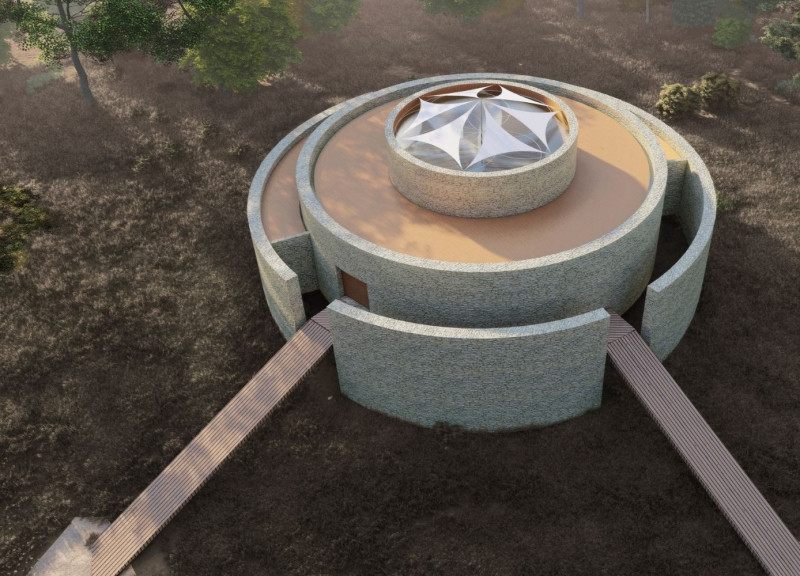5 key facts about this project
The Labyrinth Community Center serves as a multifaceted architectural project designed to foster community engagement, education, and spiritual reflection. Integrating local materials and sustainable design practices, this facility reflects a deep understanding of its surroundings and the needs of its users. The primary function of the community center is to provide a versatile space that accommodates a wide range of activities, from workshops and seminars to quiet contemplation.
The architectural layout incorporates a central open area designed to host various events, allowing flexible seating arrangements to adapt to different group sizes and purposes. The design emphasizes connectivity with the natural environment through the careful placement of windows and orientation, enhancing the user experience by maximizing natural light and views of the surrounding landscape.
Spatial Organization and Unique Design Features
The unique aspect of the Labyrinth Community Center lies in its innovative approach to spatial organization, drawing on the metaphor of a labyrinth to guide users through their experience. The central feature, an oculus, enables sunlight to flood the space, crafting a dynamic interplay of light and shadow that changes throughout the day. This element is not merely aesthetic; it enhances the meditative quality of the environment.
The design incorporates a Zen Window, strategically positioned to frame specific natural vistas, encouraging users to pause and engage with the outdoor surroundings. This thoughtful integration of natural elements instills a sense of tranquility, making the center not just a place for activities but a space for introspection.
Sustainability and Material Selection
A crucial element of the project is its commitment to sustainability, evidenced by the choice of locally sourced stone and wood. The use of local materials reduces environmental impact, while the building's thermal mass enhances energy efficiency by regulating indoor temperatures. The design also includes a biodigester, emphasizing nutrient recycling and waste reduction while promoting sustainable practices within the community.
Overall, the Labyrinth Community Center represents a holistic architectural solution. Its design not only fulfills practical requirements but also creates a nurturing environment for personal development and collective interaction. For a deeper understanding of the architectural plans and sections that bring this project to life, readers are encouraged to explore the detailed presentation, which showcases the architectural designs and innovative ideas that define this unique endeavor.





















































